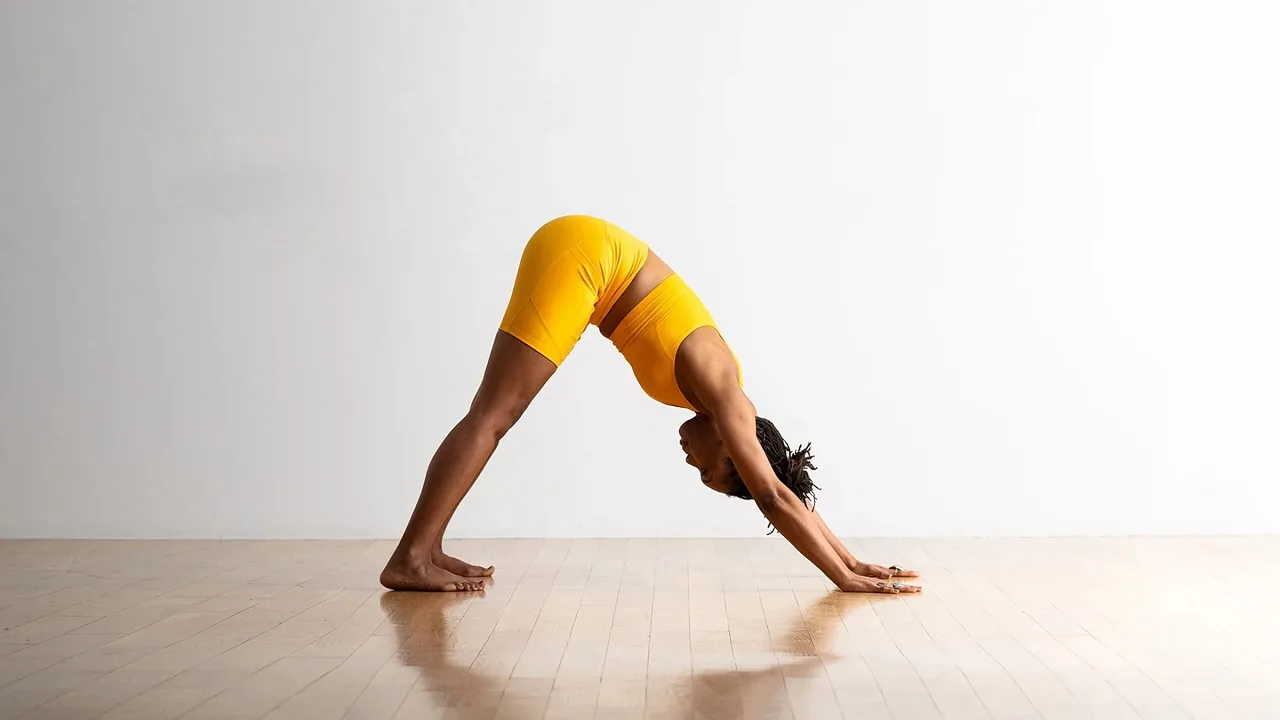Some of the most popular yoga postures include the Downward-Facing Dog and Adho Mukha Svanasana. Numerous yoga forms start with this stance, which has numerous physical and emotional advantages. In addition to improving strength and flexibility, it improves circulation and mental wellness. Inverting the body improves circulation, reduces tension, and fosters balance and relaxation.
This Article discusses Downward-Facing Dog’s stress-relieving advantages, circulation-boosting effects, and benefits.
The Power of Inversion
Downward-Facing Dog is a modest inversion with the head below the heart. Yoga inversions increase upper-body and cerebral blood flow. This gravitational change encourages fresh, oxygenated blood to flow into the brain, improving mental clarity and alertness. Blood returns to the heart more freely after inversion, improving cardiovascular health.
The position strengthens the upper body, stretches the hamstrings, calves, spine, and back legs, and lengthens them. Pressing your hands into the mat and lifting your hips to the sky demands strength and flexibility to balance the body.
Due to gravity, the Downward-Facing Dog’s inverted body boosts blood circulation. This increases oxygen to important organs, including the brain, improving cognition and energy. The Downward-Facing Dog reverses gravity and improves circulation in low-blood-flow regions, making it beneficial for those who sit or stand all day.
Improving Circulation and Lymphatic Flow
Downward-facing Dogs boost the lymphatic system, which is vital to immunological health and circulation. The lymphatic system moves white blood cell-containing lymph through the body via muscular action. By exercising several muscle groups, Adho Mukha Svanasana stimulates lymph flow, which may help drain toxins and enhance the immune system. This position enhances extremity circulation by using the arms and legs. Blood from the lower legs is pulled up, minimizing edema and improving vascular health. Gentle back and neck stretching enhances blood flow, relieving stress and pain.
One of the most effective asanas for lowering tension and creating calm is the Downward-Facing Dog posture. This position calms the nervous system and reduces stress chemicals like cortisol, balancing the body and mind. Because of the viewpoint shift, inverting the head improves attentiveness. Deep, steady breathing while holding the posture calms the mind, eliminating worry and clutter. As they hold Downward-Facing Dog, the practitioner feels stress release in their shoulders, neck, and back.
This mix of physical activity and attentive breathing promotes mental tranquility. The position relieves muscular tension, relaxing the mind. Downward-Facing Dog reduces anxiety and stress by soothing the body while the practitioner breathes deeply.
Reducing Stress and Promoting Calm
Start Downward-Facing Dog on hands and knees at a table. Align your wrists beneath your shoulders and legs hip-width apart. Exhale, raise your hips to the ceiling, straighten your legs, and push your heels down. Shape your body into an inverted “V.”
To work your arms and shoulders, keep your hands shoulder-width apart, fingers splayed, and push hard into the mat. Draw your chest toward your thighs to lengthen your spine and expand your chest. Relax your neck and look at your belly button or legs. Bend your knees to maintain your spine curvature if your hamstrings are tight.
Hold the stance for many breaths, breathing deeply and steadily. From the posture, gently drop your knees to the mat and return to a tabletop position.
